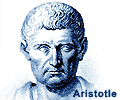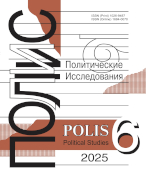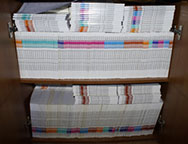In search of Eurasia:
discourse analysis of the views of experts and political scientists in Russia and China
Novikov D.P.,
HSE University, Moscow, Russia, dp.novikov@hse.ru
elibrary_id: 907954 | ORCID: 0000-0003-3066-7044 | RESEARCHER_ID: K-8730-2015
Bocharova A.P.,
HSE University, Moscow, Russia, apbocharova@hse.ru
elibrary_id: 1166779 | ORCID: 0000-0002-2167-8342 | RESEARCHER_ID: GSE-6417-2022
Article received: 2022.04.04 15:30. Accepted: 2024.10.16 15:31

DOI: 10.17976/jpps/2025.03.03
EDN: MNKDBR
Novikov D.P., Bocharova A.P. In search of Eurasia: discourse analysis of the views of experts and political scientists in Russia and China. – Polis. Political Studies. 2025. No. 3. https://doi.org/10.17976/jpps/2025.03.03. EDN: MNKDBR (In Russ.)
The study was prepared by A.P. Bocharova within the framework of a research project under the grant of MGIMO University, project No. 2025-04-03.
Russia and China are the leading states of the Eurasian continent, and the dynamics of their relations largely determines the dynamics of geopolitical processes in the region. In this context, the actual question is how similar and compatible are the Russian and Chinese ideas about Eurasia, and Eurasian regionalism? In the past few years, Russia has made significant efforts to promote its vision of the international order on the continent, including the formulation and promotion of the very concept of Eurasia in relation to its geopolitical environment. One of the main consumers of these ideas was China, Russia’s key partner and at the same time the objective engine of many processes in the Eurasian transregional space. Have Russian efforts achieved their goals? In the article, we define Eurasia as a social construct, which is an element of foreign policy thinking and be should be accounted for in scientific and expert discussions. A comparative analysis of Russian and Chinese discourses should make it possible to establish, at least in part, the extent to which Beijing has adopted Moscow’s ideas about the development of Eurasian regionalism and how close the understanding, and hence the positions of Russia and China, are on the future international order on the continent or in its separate parts.
References
Dijk, T.A., van (2015). Critical discourse analysis. In The Handbook of Discourse Analysis (pp. 467-485). Chichester: John Wiley & Sons.
Fairclough, N. (2012). Critical discourse analysis. In The Routledge Handbook of Discourse Analysis (pp. 9-20). Oxon: Routledge.
Liu, M., Yan, J., & Yao, G. (2023). Themes and ideologies in China’s diplomatic discourse – a corpus-assisted discourse analysis in China’s official speeches. Frontiers in Psychology, 14, 1278240.
Lukin, A., & Novikov, D. (2021). Sino-Russian rapprochement and Greater Eurasia: from geopolitical pole to international society? Journal of Eurasian Studies, 12(1), 28-45. https://doi.org/10.1177/1879366520965549
Macaes, B. (2018). The dawn of Eurasia: on the trail of the new world order. New Haven: Yale University Press.
Phillips, L., & Jørgensen, M.W. (2002). Discourse analysis as theory and method. London: SAGE Publications. Shei, C. (Ed.). (2019). The Routledge handbook of Chinese discourse analysis. London: Routledge.
Tsung, L., & Wang, W. (Eds.). (2015). Contemporary Chinese Discourse and Social-Ractice in China (Vol. 4). Amsterdam: John Benjamins Publishing Company.
Wodak, R. (2011). Critical discourse analysis. In Continuum Companion to Discourse Analysis (pp. 38-53). London; New York: Continuum International Publishing Group.
Wodak, R., & Meyer, M. (Eds.). (2001). Methods of critical discourse analysis. London: SAGE Publications.
Xu, S. (2014). Chinese discourse studies. London: Palgrave Macmillan.
Zhang, B., & Shu, Z. (2023). The images of China in TIME: A corpus-based critical discourse analysis. International Journal of English Linguistics, 13(1), 1-13. https://doi.org/10.5539/ijel.v13n1p1
Bdoyan, D.G. (2017). The transformation periods in the Russian-Turkish relations (1991-2016). MGIMO Review of International Relations, 4, 165-182. (In Russ.) https://doi.org/10.24833/2071-8160-2017-4-55-165-182
Bratersky, M.V., Skriba, A.S., & Sapogova, A.I. (2021). The struggle for recognition or enhancement of status: conditions for the stability and development of unrecognized states using the example of Eurasia. International Organisations Research Journal, 16(3), 203-219. (In Russ.) http://doi.org/10.17323/1996-7845-2021-03-09
Kanaev, E.A., & Liu, S. (2018). Shanghai Cooperation Organization in China’s Belt and Road initiative. Locus: People, Society, Culture, Meanings, 2, 116-124. (In Russ.)
Marchenko O., Savel’yev V., Podkoval’nikov S., Solomin S., & Chudinova L. (2018). Russia in Eurasian Electric Power Integration. World Eсonomy and International Relations, 62, 6, 18-29. (In Russ.) https://doi.org/10.20542/0131-2227-2018-62-6-18-29
Mordvinova, A. (2019). Central Asian republics’ membership in the WTO: issues and prospects for cooperation. Problems of National Strategy, 4, 106-120. (In Russ.)
Chen, Y. (2021). Russia’s strategic thinking on the evolution of the international landscape amid the pandemic: Based on judgments and policy recommendations of strategic and academic communities. China Institutes of Contemporary International Relations (CICIR). (In Chin.) http://www.cicir.ac.cn/NEW/opinion.html?id=bd3b1ed8-670c-49e1-be53-605390c33678
Chen, Zh. (2013). Emphasizing the study of Russian history in world history research. Chinese Academy of Social Sciences, September 24. (In Chin.) http://www.cass.cn/xueshuchengguo/xscg_lsyjy/201309/t20130924_424108.shtml
Fang, X. (2019). Cultivating new growth points in forging global partnerships with innovations. China Institute of International Studies (CIIS). (In Chin.)
Zeng, Q. (2019). The “matryoshka” model of Eurasian order: regional differentiation and its influence. In Global Development Strategy: Situation and Analysis (2018). China Center for International Economic Exchanges Report. (In Chin.) http://www.cciee.org.cn/Detail.aspx?newsId=16780&TId=231
Zuo, F. (2020). Promoting the construction of the Greater Eurasian Economic Zone through pragmatic cooperation. Chinese Academy of Social Sciences (CASS). (In Chin.) http://www.cssn.cn/dzyx/dzyx_llsj/202007/t20200703_5151348.shtml
See also:
Melville A.Yu., Ilyin M.V., Makarenko B.I., Meleshkina E.Yu., Mironyuk M.G., Sergeev V.M., Timofeev I.N.,
Russian Foreign Policy as Seen by the Expert Community. – Polis. Political Studies. 2009. No4
Benevolensky V.B., Presentation.,
Russia's Foreign Policy - 1993. Analysis by Politicians and Experts (Foreword by P.SchuIze). – Polis. Political Studies. 1993. No4
Kazantzev A.A.,
Liberal approach to russian foreign policy. Notes on the margins of the book by V. Petrovsky. – Polis. Political Studies. 2012. No2
Sheynis V.L.,
Russia’s national security. durability trial. Part II. – Polis. Political Studies. 2010. No1
Zvereva T.V.,
On Russia in the World and the World in Russia (N.E. Bazhanova: Ad Memoriam). – Polis. Political Studies. 2015. No5




.jpg)






 print
print
.jpg)
.jpg)